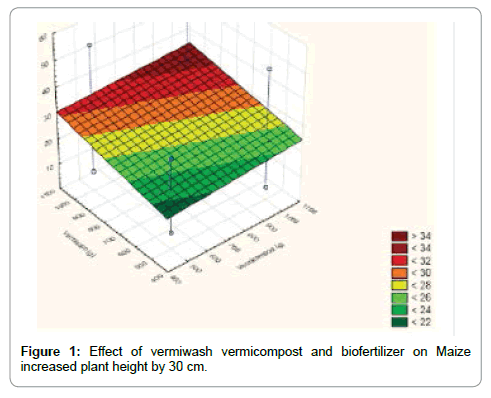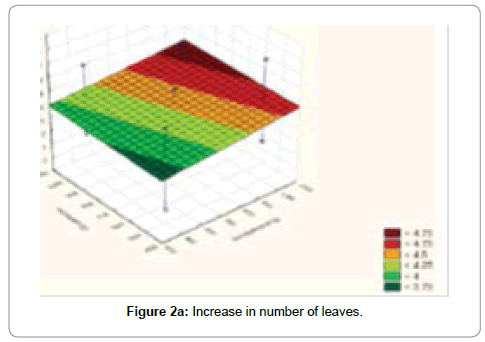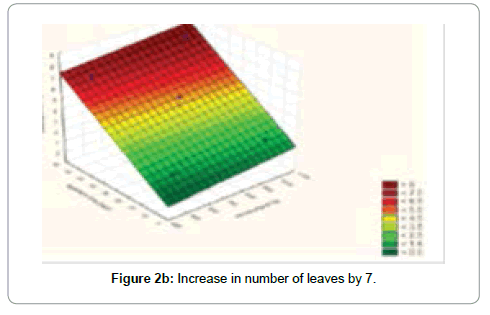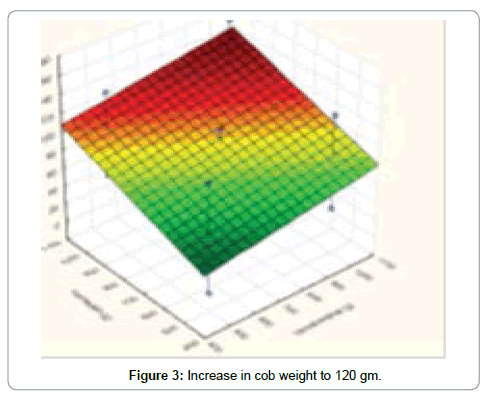Review Article Open Access
The Effect of Biofertilizers and the Effect of Vermicompost on the Cultivation and Productivity of Maize - A Review
Debojyoti Roychowdhury1*, Sandhimita Mondal2, and Sudip Kumar Banerjee1
1Department of Biochemistry, Techno India University, Kolkata, West Bengal, India
2Department of Microbiology, Techno India University, Kolkata, West Bengal, India
- *Corresponding Author:
- Debojyoti Roychowdhury
Department of Biochemistry
Techno India University, EM-4
Sector-5, Salt Lake
Kolkata-700 091
West Bengal
India
Tel: 9051318006
E-mail: roychowdhury.debojyoti@gmail.com
Received date: February 15, 2017; Accepted date: February 23, 2017; Published date: February 27, 2017
Citation: Roychowdhury D, Mondal S, Banerjee SK (2017) The Effect of Biofertilizers and the Effect of Vermicompost on the Cultivation and Productivity of Maize - A Review. Adv Crop Sci Tech 5: 261. doi: 10.4172/2329-8863.1000261
Copyright: © 2017 Roychowdhury D, et al. This is an open-access article distributed under the terms of the Creative Commons Attribution License, which permits unrestricted use, distribution, and reproduction in any medium, provided the original author and source are credited.
Visit for more related articles at Advances in Crop Science and Technology
Abstract
Maize an important crops which has a huge adaptability to varied agro climatic conditions worldwide. Maize may be called as the most important cereal amongst the cereals due to its highest genetic yield potential among the cereals. Maize is the third most important staple food after rice and wheat in India. The application of synthetic fertilizers on maize and other crops have certain adverse effects on the human health and wellbeing. Biofertilizers are the natural living microorganisms which establishes either symbiotic relationship with the plant or are found at the rhizospheric soils of the plant and also increases the supply of nutrients to the plants. Vermicompost is the use of variety of worms called worm castings, worm humus that has high saturated nutrients than do organic materials have. It has huge water soluble niutrients for which these vermicompots are popu;lar organic fertilizers. In this paper which is also a review paper will describe the findings of experimental data on the effect of biofertilizers and vermicompost on the maize fields in India and other countries outside India with comparison to the synthetic fertilizers.
Crop
Keywords
Azotobacter; Rhizobium vermicompst; Maize; Phospahate solubilising bacteria; Cob weight; Plant height
Introduction
Maize may be defined as the ‘king of cereals’ as because of its potential in productivity when it is compared with other cereals [1]. Maize is actually a crop that requires high nutrition and also its productivity depends on the proper nutrient management system. But the agricultural system practiced in India is exploitative in nature for which it is difficult to maintain the soil fertility and also sustainability in agriculture cannot be determined [1]. Moreover the nutrient supplying capacity of the soil declines when the huge use of synthetic fertilizers are applied on the soil. According to Rajsekaran et al. [2] the inorganic or the synthetic fertilizers have harsh effects on the human health and also leading to the loss of soil quality and the contamination of underground water. Apart from these the use of synthetic fertilizers are becoming costly for the farmers and also problems are arising due to the scarcity of availability in peak seasons.
Problems faced by using chemical fertilizers like loss of soil fertility and ground water contamination
According to Fred [3] agriculture provided both positive and as well as negative effects and the use of synthetic fertilizers leads to the loss of the natural nutrient of the soil when they are used on soil surface. According to Katsunori et al. [4] the inorganic fertilizers that are applied on the soil are more environment resistant than the natural fertilizers as they are mixed with chemicals and so they are harmful and are also posing threat to the environment and the effects are felt on soil fertility.
In this context the use of organic fertilizers are creating growing awereness among the farmers which includes biofertilizers and vermicompost as a source of macro, micro and secondary nutrients to sustain the soil fertility. Organic manure may provide nutrients for the soil micro-organisms, thus increases the microbial activities in soil, which in turn help to convert unavailable plant nutrients into available form for plant growth promotion. Thus it might be considered that the use of organic fertilizers are rapidly replacing the use of inorganic fertilizers. The use of biofertilizers are useful in offering an eco-friendly route to boosting productivity of farm. Maize growth from enriched organic manures which includes biofertilizers were compared with inorganic NPK fertilizer as suggested by Ayoola and Makinde [5]. Abou El-Magd et al. [6] has suggested that the dual combination use of inorganic fertilizers and as well as organic biofertilizers increases the maize yield in the field.
A Brief Description to the Biofertilizers
Biofertilizers are the inoculations of microbial cultures which are actually multiplied artificially of certain soil microorganisms that can improve soil fertility and crop productivity. Biofertilizers are economical as they cost very low and are also the renewable sources through which the plant gets nutrients which supplement chemical fertilizers. Biofertilizers provides nutrient supply like nitrogen and phosphorous through their activities in the soil or rhizosphere and makes them available to the plants on the soil. Biofertilizers are now very important because thay are properly maintaining the health of the soil and are reducing pollutions in the environment by cutting down the use of chemicals.
The Types of Biofertilizers
Azotobacter
These bacteria belongs to the family of Azotobacteriaceae, aerobic, free living, and heterotrophic in nature. They are found in neutral or alkaline soils and A. chroococcum are the most common occurring species in arable soils. A. vinelandii, A. beijerinckii, A. insignis and A. macrocytogenes are other reported species. The population number of Azotobacter rarely exceeds of 104 to 105 g├ó┬?┬É1 of soil due to lack of organic matter and presence of antagonistic microorganisms in soil.
Phosphate solubilizers
These bacterial species has the ability to solubilize insoluble inorganic phosphate compounds, which are tricalcium phosphate, dicalcium phosphate, hydroxyapatite, and rock phosphate. The examples among the bacterial genera with this are pseudomonas, Bacillus, Rhizobium.
Rhyzobium (RHZ)
These bacteraial inoculantions has for the ability of fixing atmospheric nitrogen in association with plants forming nodules in roots stem nodules. RHZ are restricted by their specificity and only certain legumes are benefited from this symbiosis. They are found in Rhizobiaceae, symbiotic in nature, that fixes nitrogen 50├ó┬?┬É100 kg/ ha in association with legumes only [7].
Vermicompost and Vermicomposting as a Part of Biofertilizer
Vermicompost may be defined as the product of composting using various worms to create a heterogeneous mixture of decomposing vegetable or food waste, bedding materials, and vermicast. Vermicomposting technology also involves the biological conversion of organic wastes into vermicasts and sometimes by the utilization of vermiwash utilizing earthworms. These earthworms always feed on the waste and the gut of the worm are the bioreactor where the vermicasts are generally produced [8].
The Role of Biofertilizers and the Nutrient Level Effects on the Yield and Henceforth the Uptake of Nutrient by Maize (Zea mays)
The management of nutrient is a vital factor that affects the yield of maize as reported by Verma et al. [9]. The nitrogen is an important primary nutrient for a good harvest productivity of maize of about 150 kg/ha can be obtained. This review paper describes the application of organic biofertilizers on the maize crop to find out the increase in yield and also the nutrient uptake by the plant. In fact a cost effective method of an eco and environment friendly sustainable system is developed where the supply of nutrients can be ensured to the plant.
Thus an experiment was carried out in the at Fertilizer Research Institute where the soil was alluvial in nature. Soil samples that were brought from different spots were made free from other foreign materials by sieving methodology. The pH of the soil and other physic chemical properties were determined where according to Walkley and Black [10] the organic C which was estimated as 0.42 g% available, and the N was 210 kg/ha as suggestions by Subbiah and Asija [11], 0.5 M NaHCO3-extractable P2O5 13 kg/ha as suggested by Olsen et al. [12] and K2O 176 kg/ha was accordingly to Hanway and Heidel [13] and available Zn was 1.12 kg/ha extracted by a process of DTPA.
According to the findings of Meena et al. [14] showed the different treatment combinations which was statistically P< 0.05 where the Stover and grain yields of maize plants from Table 1 was found to be 37% and 58.8% due to the application of inorganic fertilizers over the control of in maize plants. In the treat ment combination of T10 (T4+azotobacter+FYM@5 t/ha) it can be found that the it resulted in 105% and 138% increase in the yield over the control. This increment of yield was due to the conjoint application of chemical and biofertilizers. The result of T10 was greater than that of T2 which is actually (4.3 and 13.8 mg/ha). This result is agreeing with Nessera et al. [15]. Thus the combined use of Azotobacter a biofertilizer, inorganic fertilizer and Farm yard manure increased the yield of maize from Table 2 it can be understood [14]. The treatment of N100P75K40ZN5+FYM @ 5 t/ha+Azotobacter inoculation was found to be suitable for getting optimum yield of maize [14].
| Treatment | Yield of maize(mg/ha) | Percent increase overcontrol | ||||
|---|---|---|---|---|---|---|
| Grain | Stover | Total | Grain | Stover | Total | |
| T1 | 2.1c* | 5.8c | 7.90d | - | - | - |
| T2 | 2.9bc | 9.2bc | 12.05c | 37.4** | 58.8 | 45 |
| T3 | 3.6ab | 10.0ab | 14.60abc | 70.7 | 89.7 | 70 |
| T4 | 3.8ab | 13.3ab | 17.05a | 79.7 | 128.1 | 95 |
| T5 | 3.1abc | 9.6bc | 12.70bc | 47.8 | 64.4 | 51 |
| T6 | 3.8ab | 11.5ab | 15.25abc | 79.9 | 98.2 | 73 |
| T7 | 4.0ab | 13.1ab | 17.10a | 90.1 | 124.8 | 105 |
| T8 | 3.2abc | 10.0ab | 13.20bc | 54.6 | 71.4 | 41 |
| T9 | 4.1a | 11.9ab | 15.95ab | 95.2 | 103.7 | 58 |
| T10 | 4.3a | 13.9a | 18.15a | 105.4 | 138.5 | 118 |
| LSD(P=0.05) | 0.84 | 2.96 | 2.75 | |||
| Treatment | Yield of maize(mg/ha) | Percent increase overcontrol | ||||
| Grain | Stover | Total | Grain | Stover | Total | |
| T1 | 2.1c* | 5.8c | 7.90d | - | - | - |
| T2 | 2.9bc | 9.2bc | 12.05c | 37.4** | 58.8 | 45 |
| T3 | 3.6ab | 10.0ab | 14.60abc | 70.7 | 89.7 | 70 |
| T4 | 3.8ab | 13.3ab | 17.05a | 79.7 | 128.1 | 95 |
| T5 | 3.1abc | 9.6bc | 12.70bc | 47.8 | 64.4 | 51 |
| T6 | 3.8ab | 11.5ab | 15.25abc | 79.9 | 98.2 | 73 |
| T7 | 4.0ab | 13.1ab | 17.10a | 90.1 | 124.8 | 105 |
| T8 | 3.2abc | 10.0ab | 13.20bc | 54.6 | 71.4 | 41 |
| T9 | 4.1a | 11.9ab | 15.95ab | 95.2 | 103.7 | 58 |
| T10 | 4.3a | 13.9a | 18.15a | 105.4 | 138.5 | 118 |
| LSD(P=0.05) | 0.84 | 2.96 | 2.75 | |||
Table 1: The effects of chemical, biofertilizer and FYM on yield of maize(Meena et al.).
| Raw Soil Sample | Vermicompost(g) | Vermiwash(g) | Time(days) |
|---|---|---|---|
| 1 | 500 | 500 | 10 |
| 2 | 1000 | 500 | 10 |
| 3 | 500 | 1000 | 10 |
| 4 | 1000 | 1000 | 10 |
| 5 | 500 | 500 | 40 |
| 6 | 1000 | 500 | 40 |
| 7 | 500 | 1000 | 40 |
| 8 | 1000 | 1000 | 40 |
| 9 | 750 | 750 | 25 |
Table 2:Factorial design for determining change of parameter.
Vermicomposting and Vermiwash Effects as Biofertilizers on the Zea Maize Growth
An experimental 23 design of vermicompost and vermiwash as biofertilizer was done in a field at Zimbabwe to find out the effects of growth on Maize plants. Different variables were used during the entire study like vermicompost quantity, vermiwash quantity and application of two biofertilizers. Vermicompost used was 500-1000 g and vermiwash ia lso in same quantity application time of 10-40 days. The other conditions during the application were applied are: 750 g of vermicompost, 750 g of vermiwash the time of 25 days as application time was suggested. The experiments was on a twice replica mode. Staistical record was done by a software for the analysis of the data from the study. The study focused on the growth of Zea mays in south Africa [8]. During the cultivation of maize the seeds of shoko brands were obtained and the seeds take two months to get ripened.
In the result part A the effect of vermiwash, vermicompost and application time was determined on plant height. From Figure 1 it was found that the plant height increased by more than 30 cm [8].
In another part B the effects of vermiwash, vermicompost and application time was determined on maize leave production. It was found that the leave production increased in such a way that the 3 leaves per plant increased in number. By the application of vermiwash the quantity of leaves increased by 2 leaves. However by the application of biofertilizer the production increased to more than 7 leaves (Figures 2a and 2b) [8]. Still in another part application of vermicompost and vermiwash increased cob weight by 30 gm. After increasing the application time the cob weight is more than 120 gm (Figure 3).
Conclusion
In conclusion the most important thing needs to be discussed is that the application of biofertilizers and the application of vermicompiost can both increase the yield of maize and all the other component of maize plants like cob weight, leave production height weight. So the application of biofertilizer and vermicompost as organic farming is the future of Indian agricultural technology.
Acknowledgements
I am grateful to Prof (Dr) Sudip Kumar Banerjee and also Prof (Dr) Sandhimita Mondal of Biochemistry amd Microbiology department for guiding me in the entire research process of biofertilizer production and application in maize field. This is a one of the review paper on two of the work of biofertilizers up till now in other states and internationally. I am also grateful to Techno India University for giving me a chance to pursue my PhD.
Conflict of Interest
No conflict of Interest.
References
- Umesha S, Srikantaiah M, Prasanna KS, Sreeramulu KR, Divya M et al. (2014) Comparative Effect of Organics and Biofertilizers on Growth and Yield of Maize (Zea mays. L).Current Agriculture Research Journal 2: 55-62.
- Rajasekaran S, Ganesh SK, Jayakumar K, Rajesh M, Bhaaskaran C, et al. (2012) Biofertilizers├ó┬?┬ÉCurrent Status of Indian Agriculture. J Environment and Bioenergy 4: 176├ó┬?┬É171.
- Fred F (1991) Pesticides and the Environment. Insects and Diseases, Agricultural MU Guide, University Missouri, Columbia, G7520: 1-6.
- Katsunori S (2003) Sustainable and environmentally sound land use in rural areas with special attention to land degradation. InBackground paper for the Asia-Pacific Forum for Environment and Development Expert Meeting,Gulin, PRC 17.
- Ayoola OT,Makinde EA (2009) Maize growth, yield and soil nutrient changes with N-enriched organic fertilizers. African J Food Agric Nutr and Dev 9: 580-592.
- Abou El-Magd M, El-Bassiong M, Fawzy ZF (2006) Effect of organic manure with or without chemical fertilizers on growth, yield and quality of some varieties of broccoli plants. J Appl Sci Res 2: 791-798.
- Mishra DJ, Singh Rajvir, Mishra UK, ShahiSudhir Kumar (2012) Role of Bio├ó┬?┬ÉFertilizer in Organic Agriculture: A Review. J Recent Sciences 2:39├ó┬?┬É41.
- Manyuchi MM, Kadzungura L, Phiri A, Muredzi P (2013) Effect of Vermicompost, Vermiwash and Application Time on Zea Mays Growth. International Journal of Scientific Engineering and Technology 2: 638-641.
- Verma NK (2011) Integrated nutrient management in winter maize (Zea mays L.) sown at different dates. J Plant Breed and Crop Sci 3: 161-167.
- Walkley A, Black IA (1934) Estimation of organic carbon by chromic acid titration method. Soil Sci 37: 29-38.
- Subbiah BV, Asija GL (1956) A rapid procedure for the determination of available nitrogen in soils. Curr Sci 25: 259-260.
- Olsen SR, Cole CW, Watanabe FS, Dean LA (1954) Estimation of available phosphorus in soils by extraction with sodium bicarbonate. US Department of Agriculture, Circular 939.
- Hanway JJ, Heidel H(1952) Soil analysis methods as used in Iowa state college.Soil Testing Laboratory. Iowa Agric 54: 1-31.
- Meena MD, Tiwari DD, Chaudhary SK, Biswas DR, Narjary B, et al. (2013) Effect of Biofertilizer and Nutrient Levels on Yield and Nutrient Uptake by Maize (Zea mays L.). Annals of Agribioresearch 18: 176-181.
- Negassa W, Negisho K, Friesen DK, Ransom J, Yadessa A (2002) Determination of optimum farm yard manure and NP fertilizer for maize under the farmers’ conditions. In: Proc 7th East and South African Regional Maize Conference, 11-15th February, Nairobi, Kenya, pp: 387-393.
Relevant Topics
- Agricultural science
- Agronomy
- Climate impact on crops
- Crop Productivity
- Crop Sciences
- Crop Technology
- Field Crops Research
- Hybrid Seed Technology
- Irrigation Technology
- Organic Cover Crops
- Organic Crops
- Pest Management
- Plant Genetics
- Plant Breeding
- Plant Nutrition
- Seed Production
- Seed Science and Technology
- Soil Fertility
- Weed Control
Recommended Journals
Article Tools
Article Usage
- Total views: 11044
- [From(publication date):
February-2017 - Jul 16, 2025] - Breakdown by view type
- HTML page views : 9369
- PDF downloads : 1675




